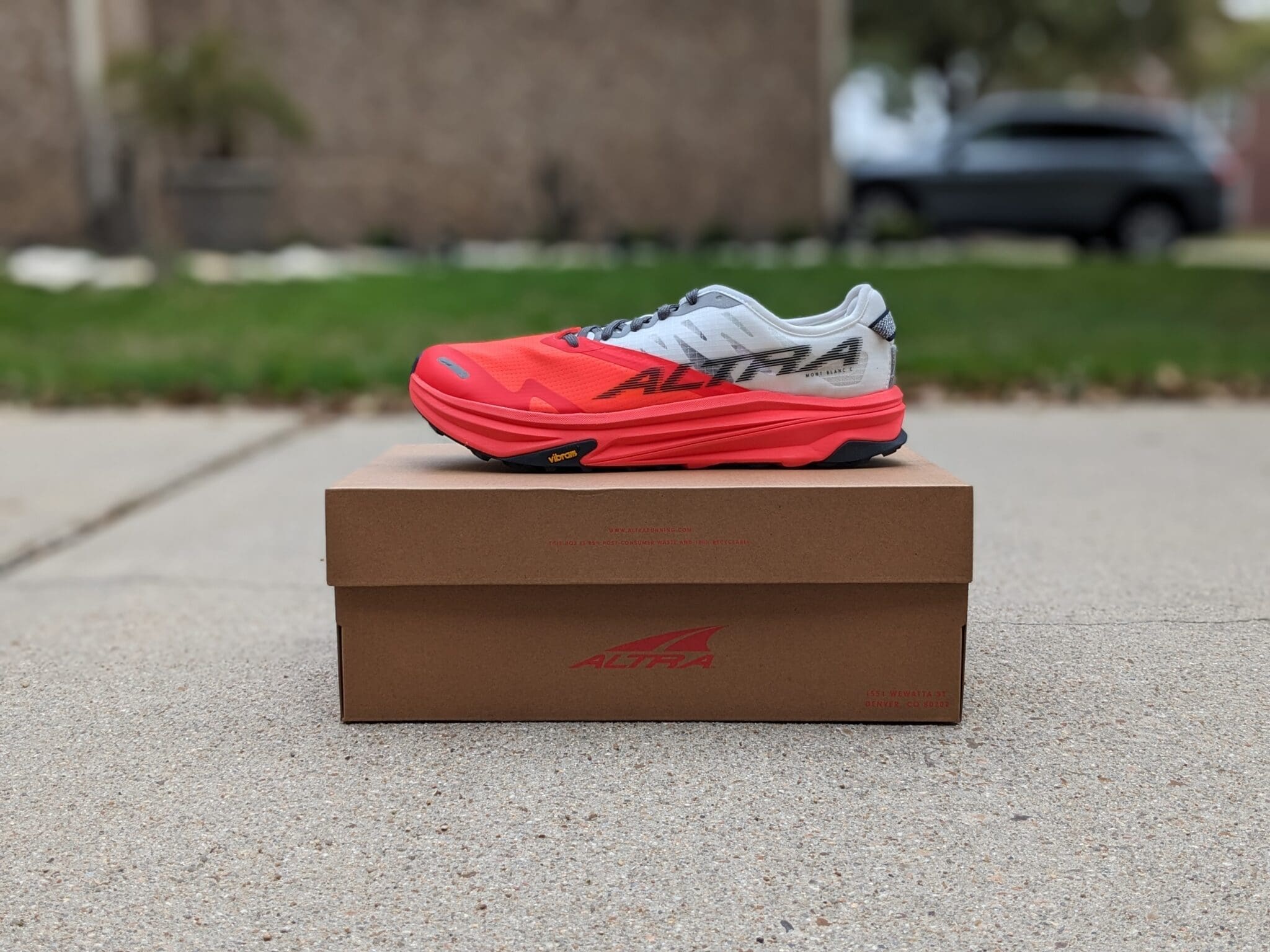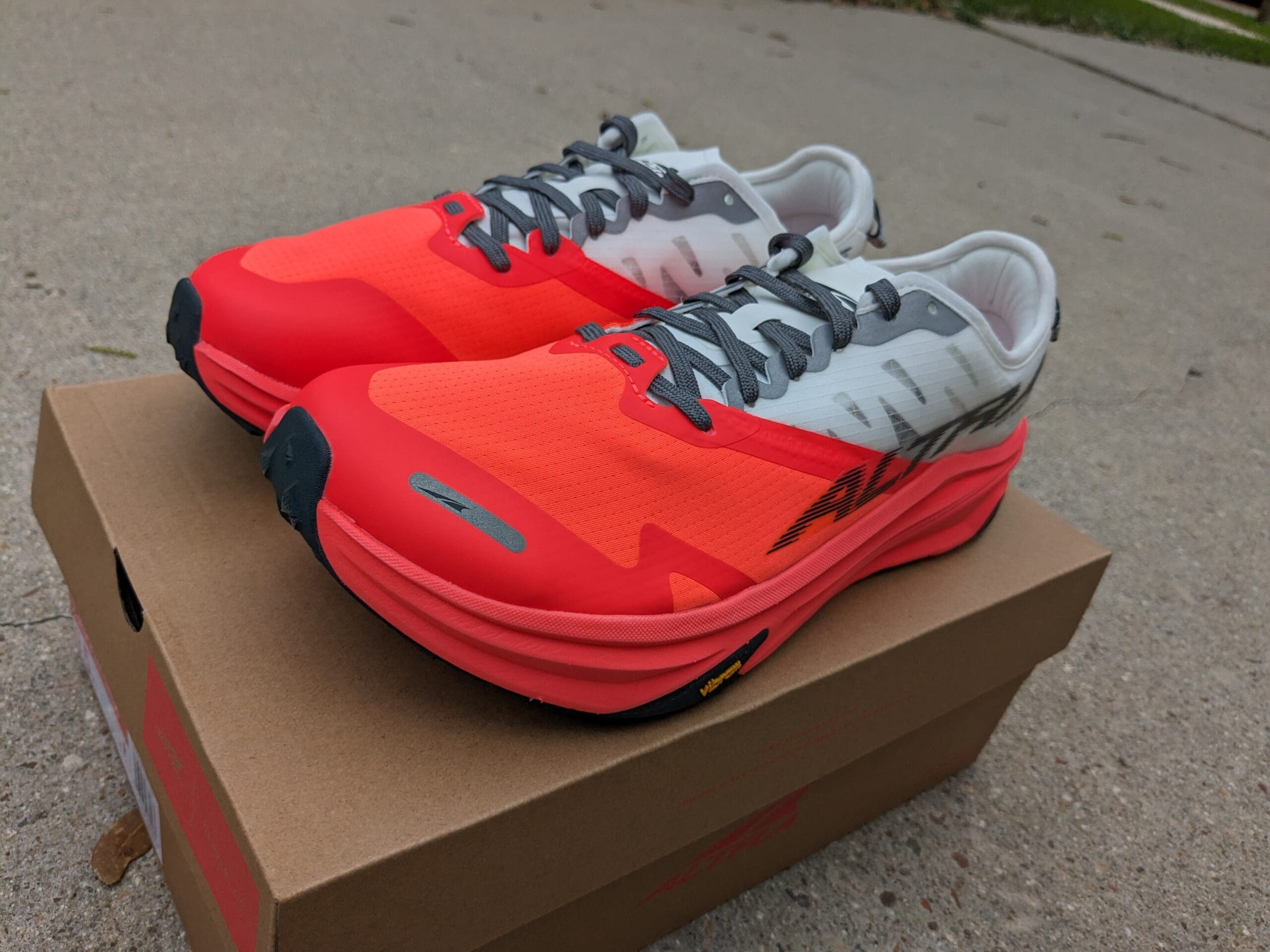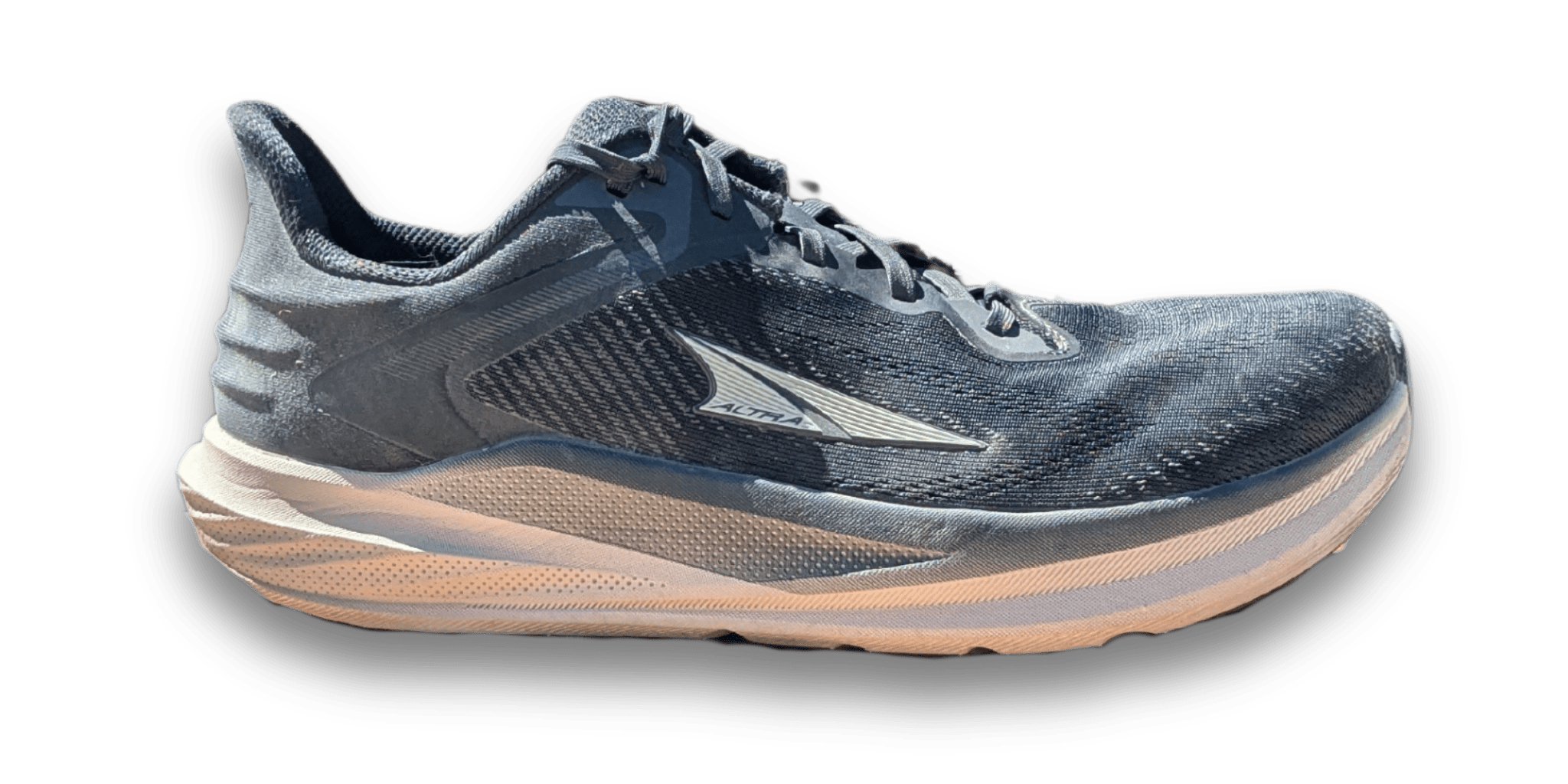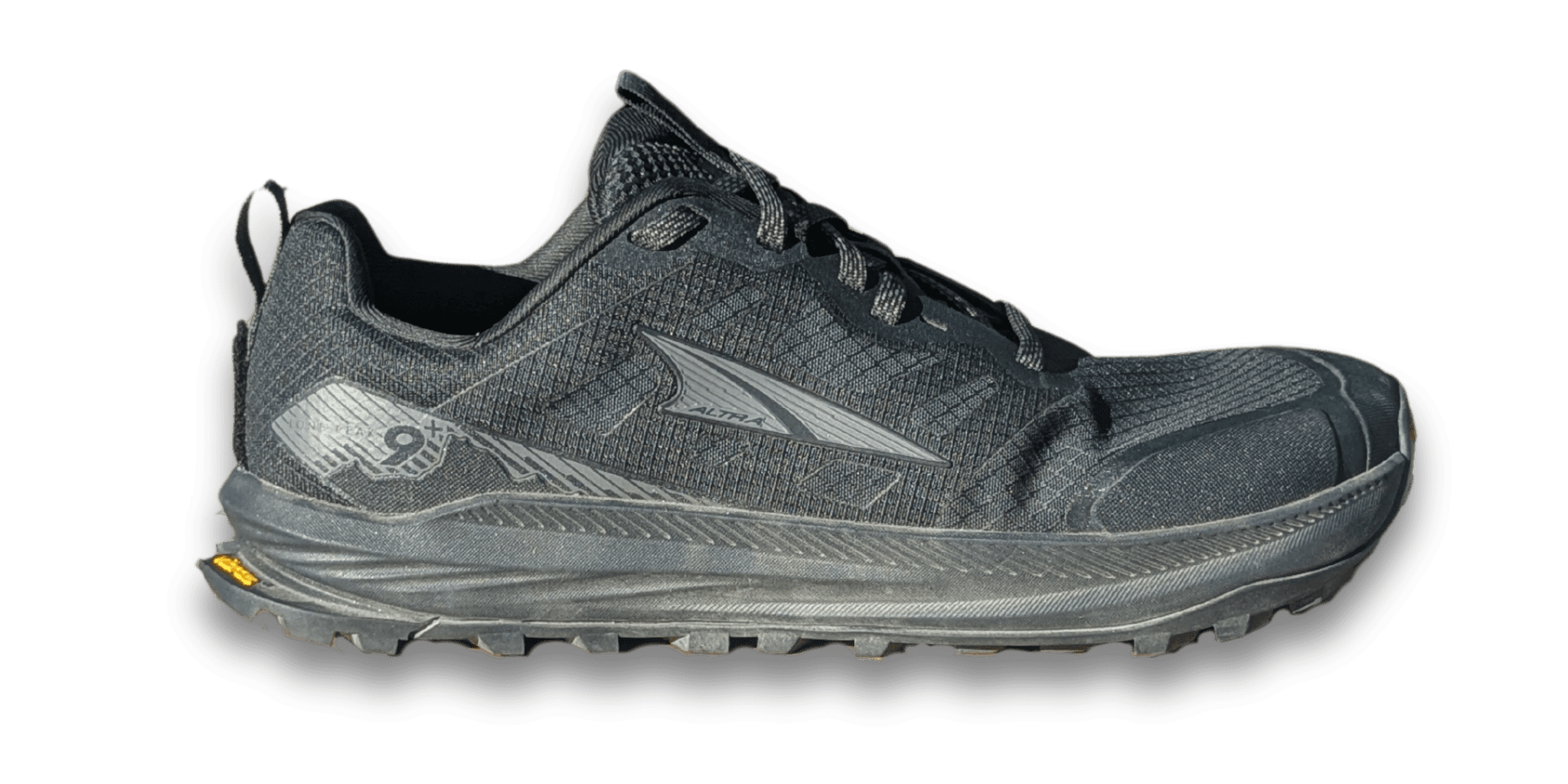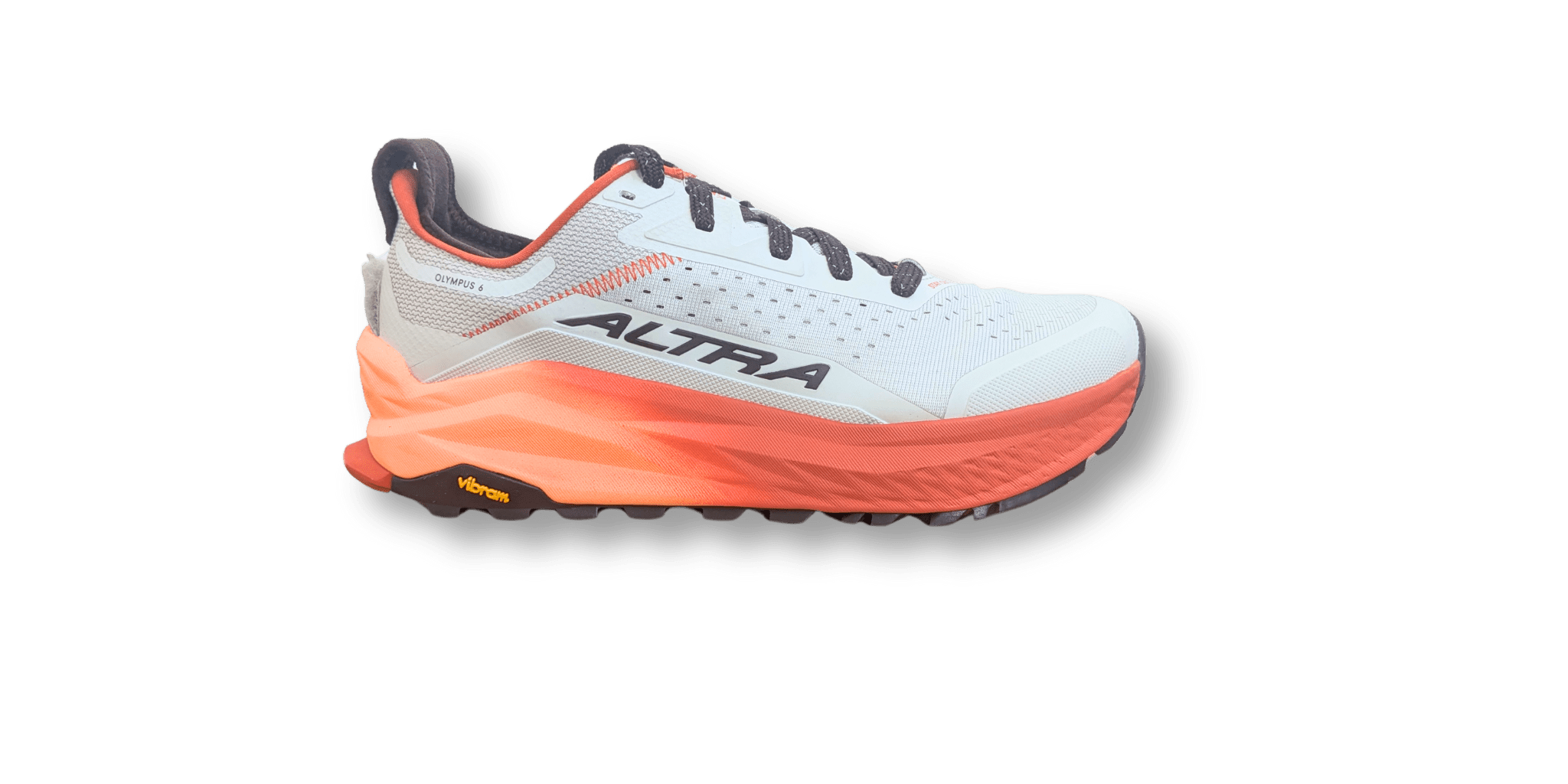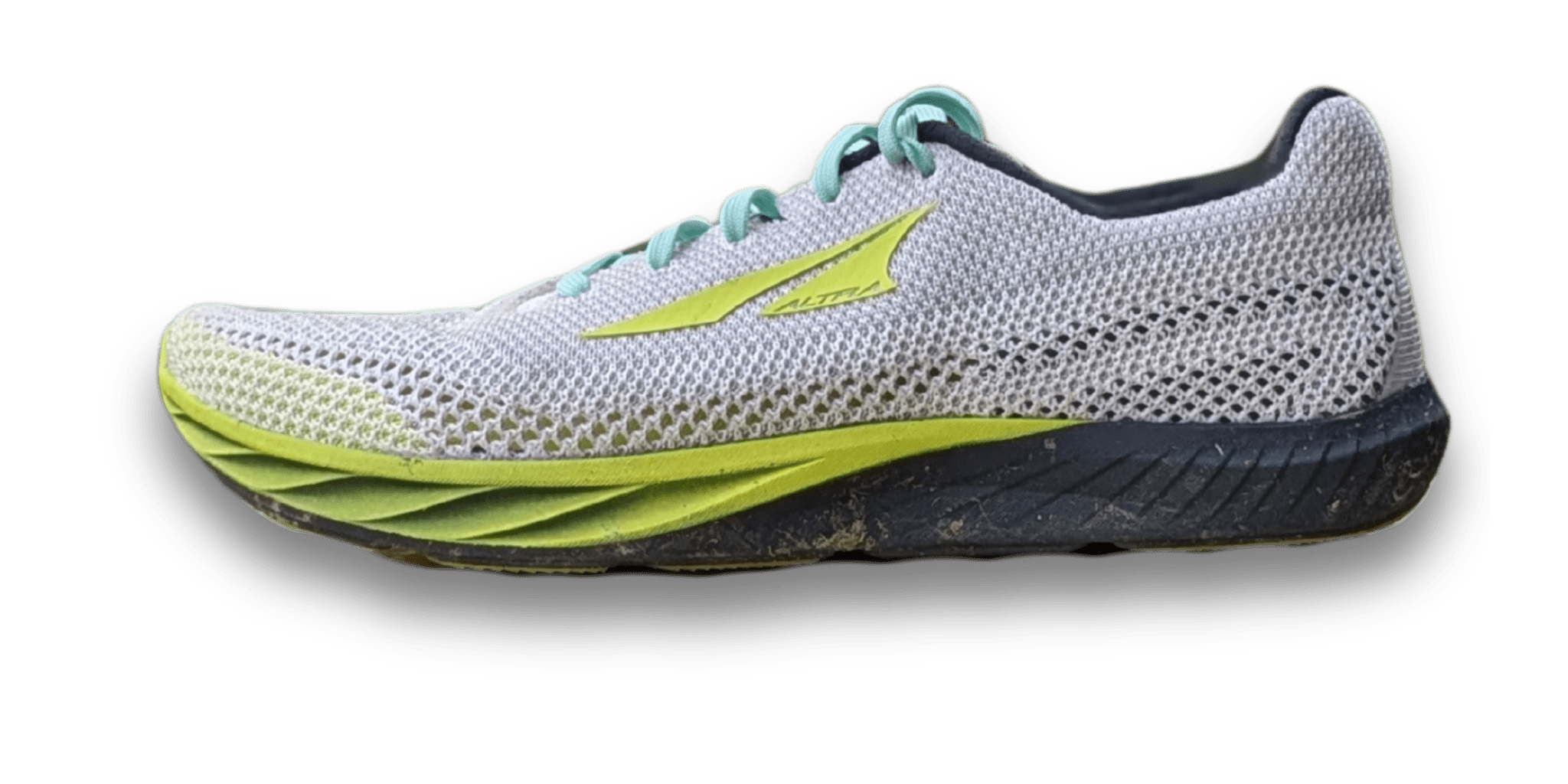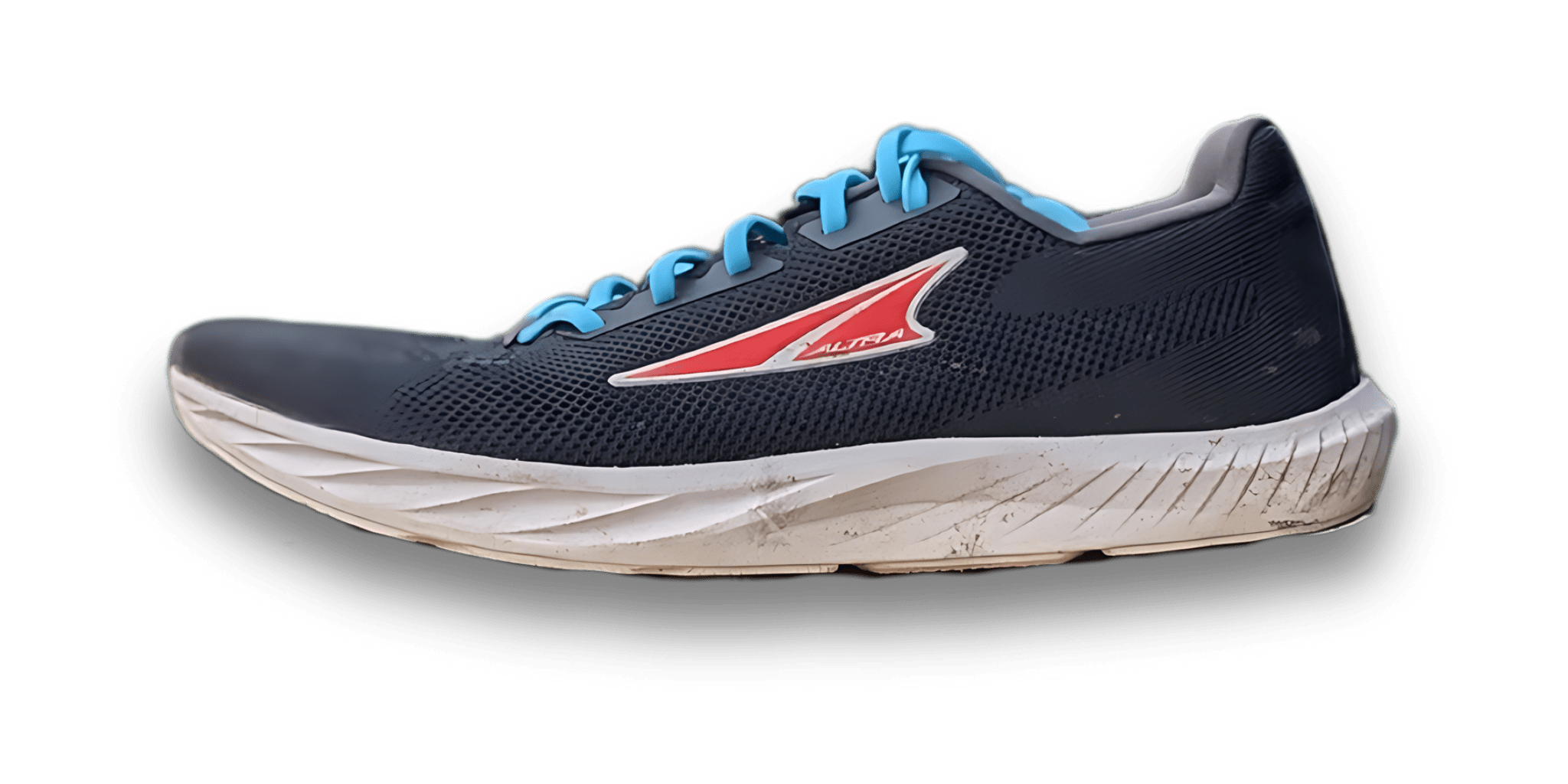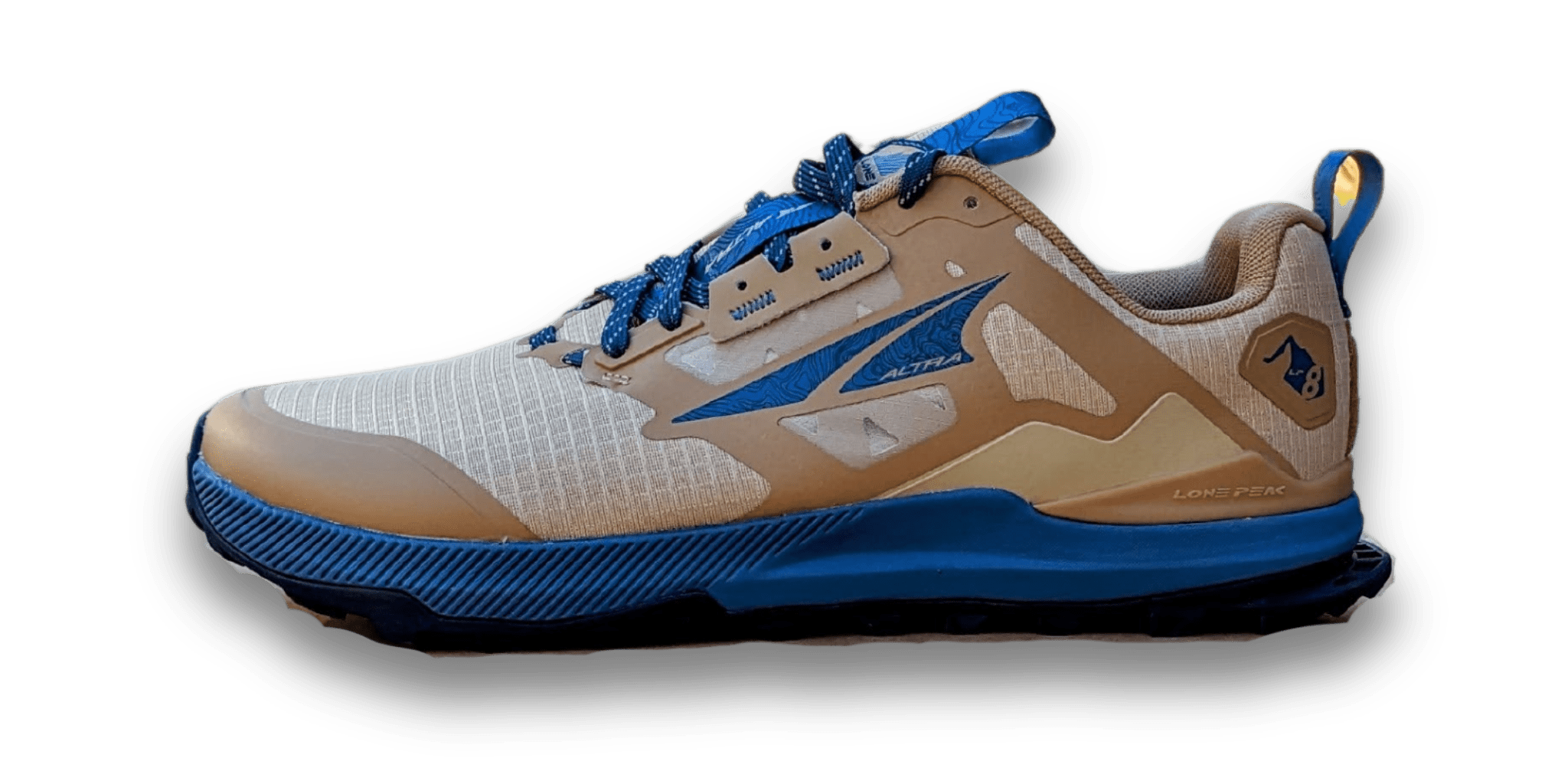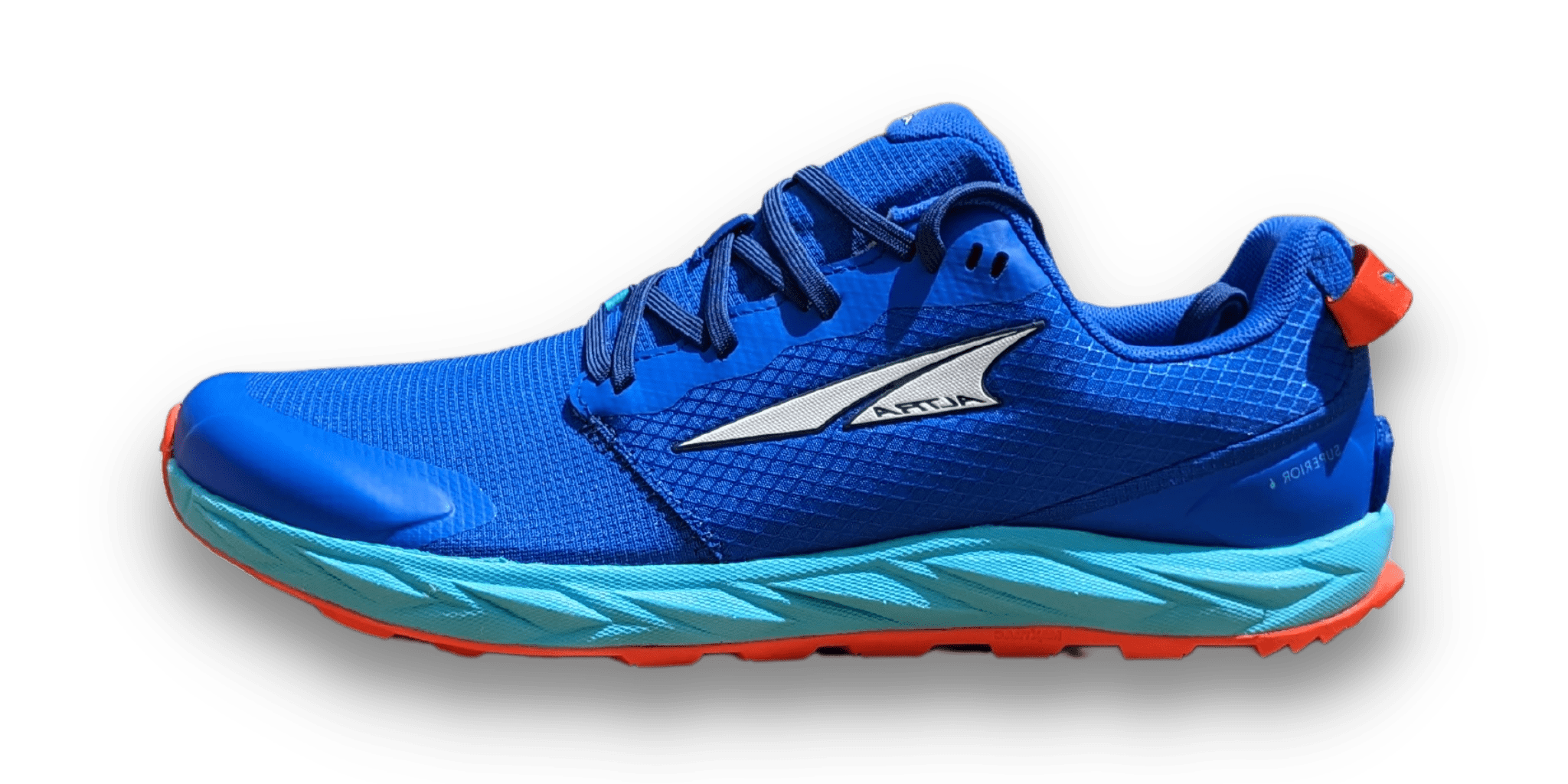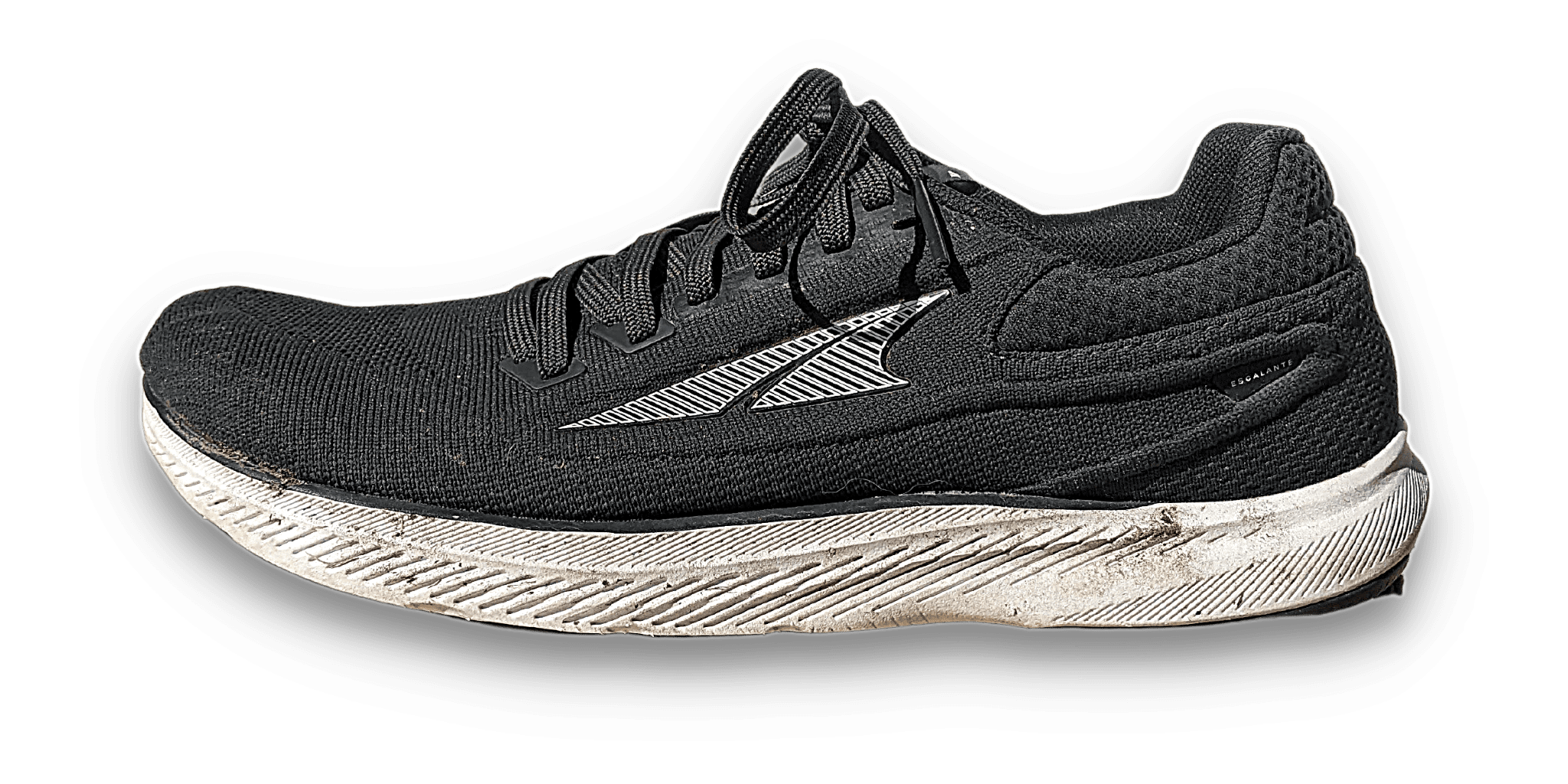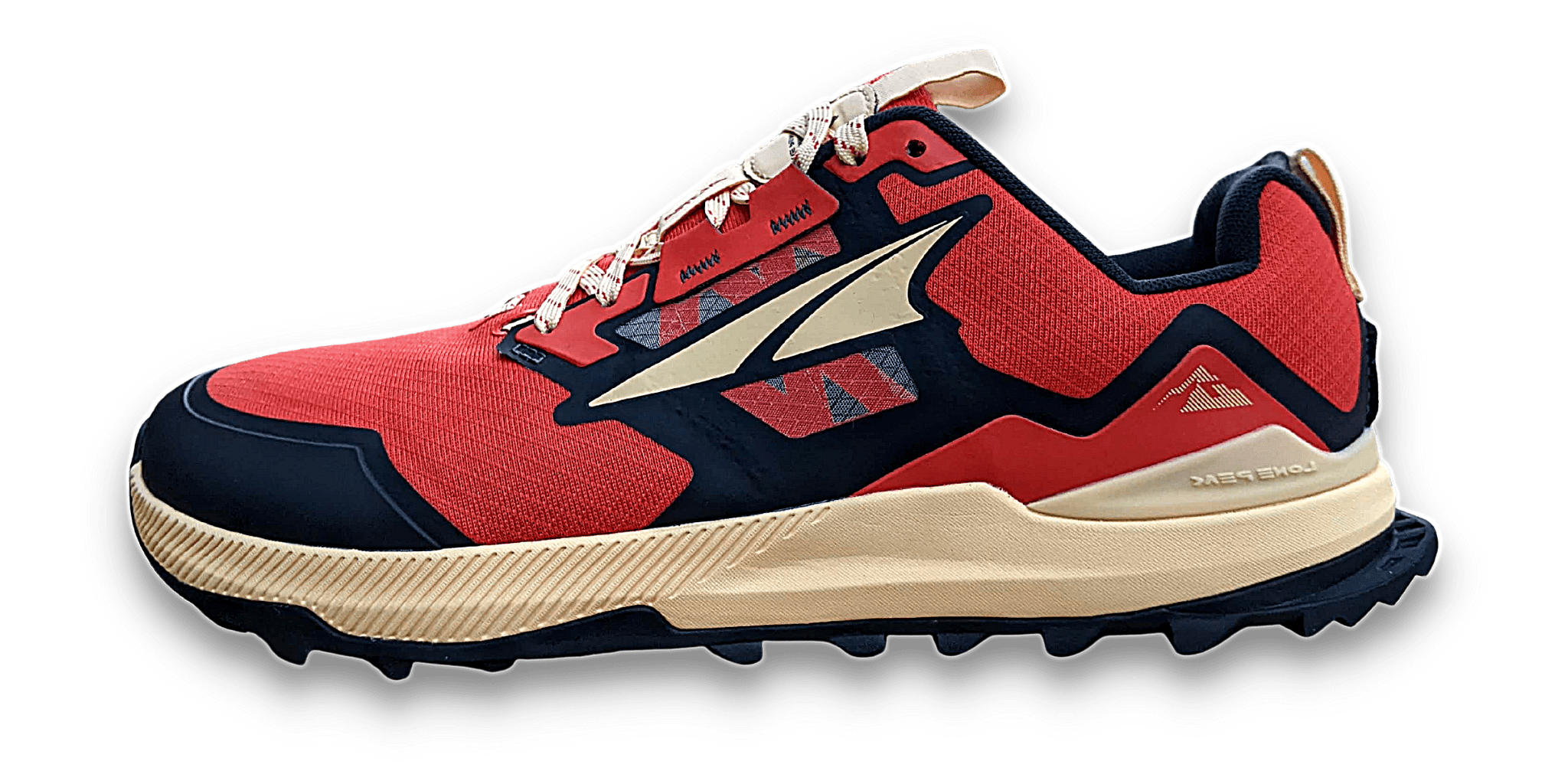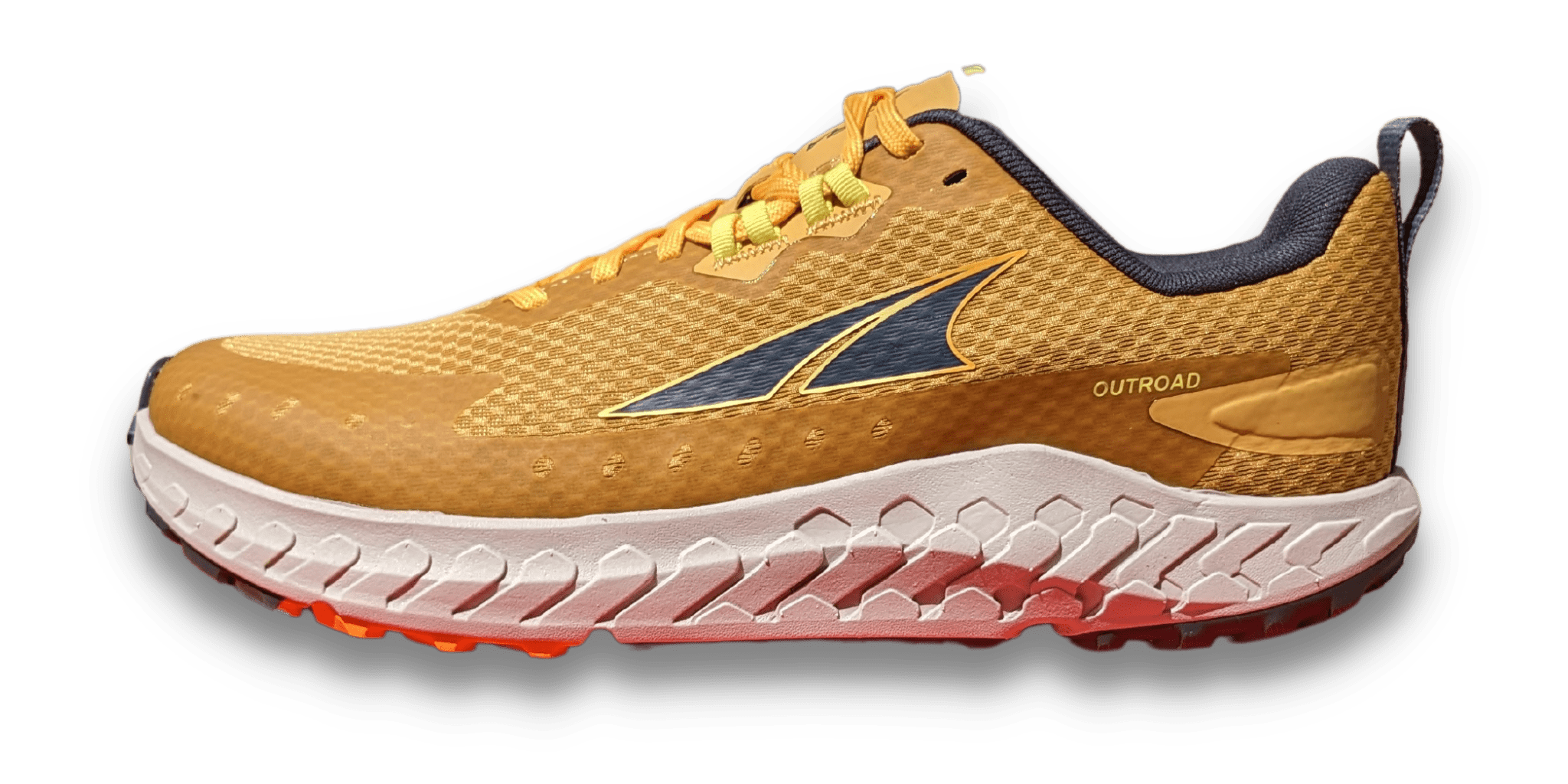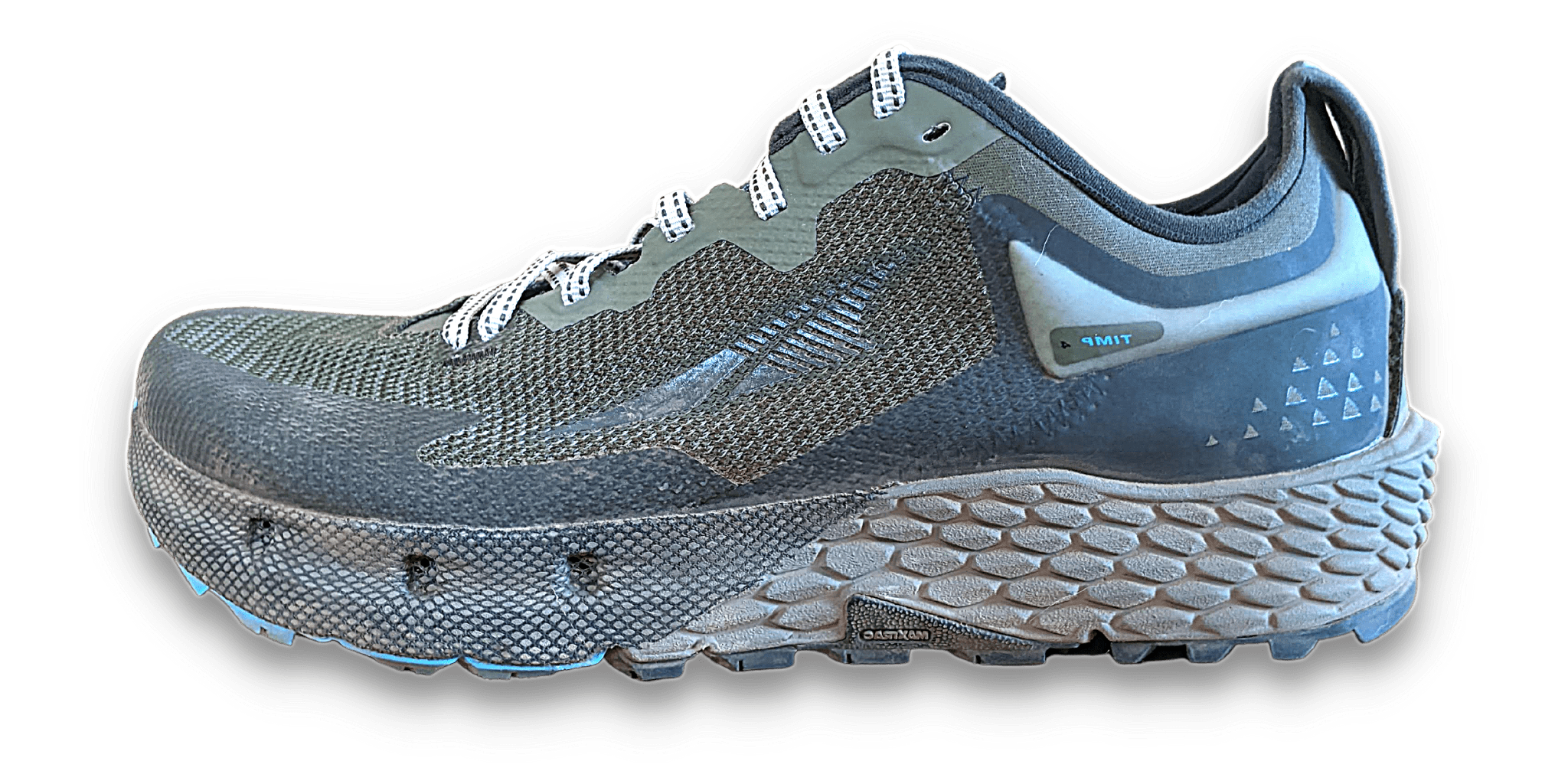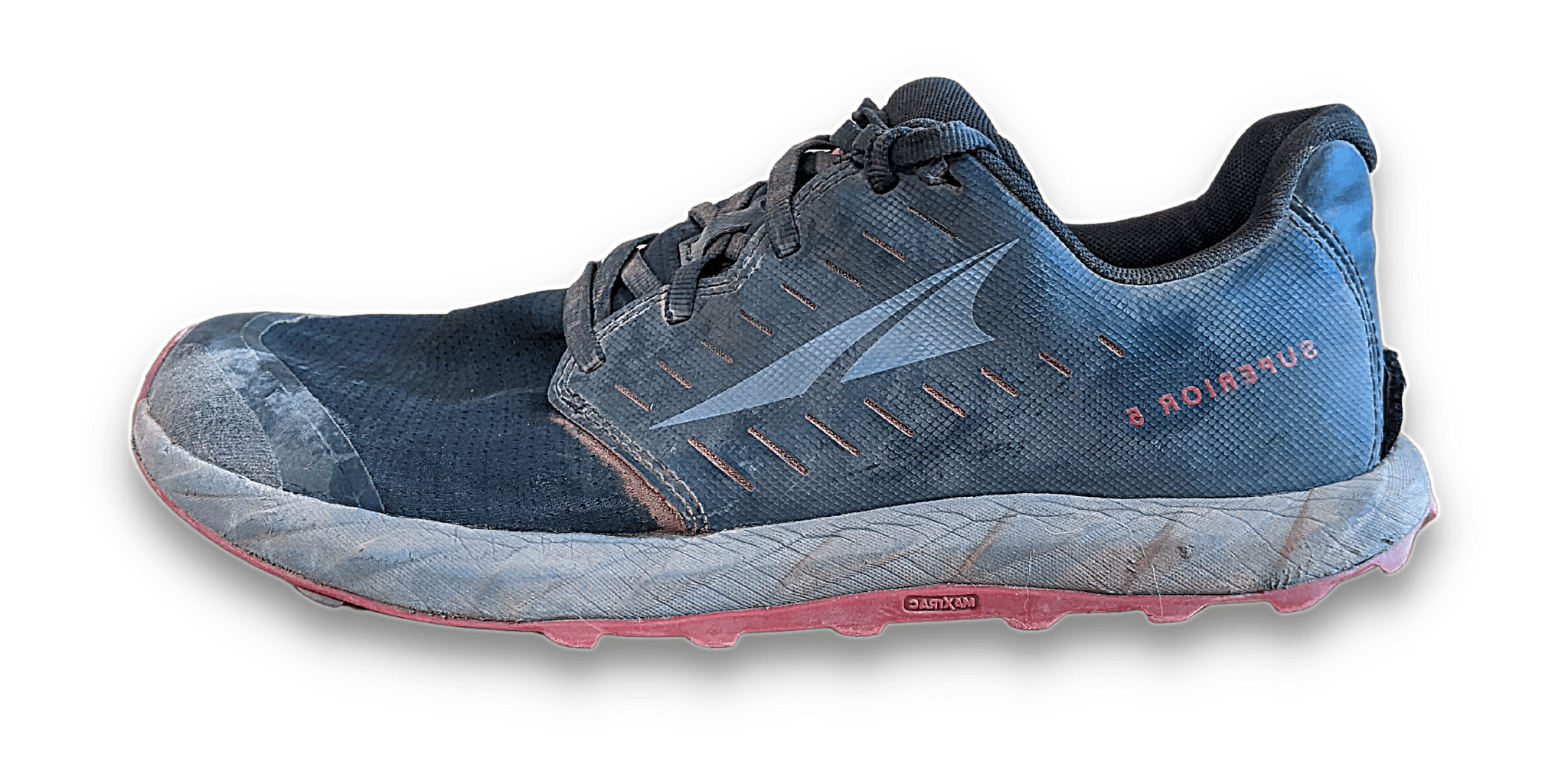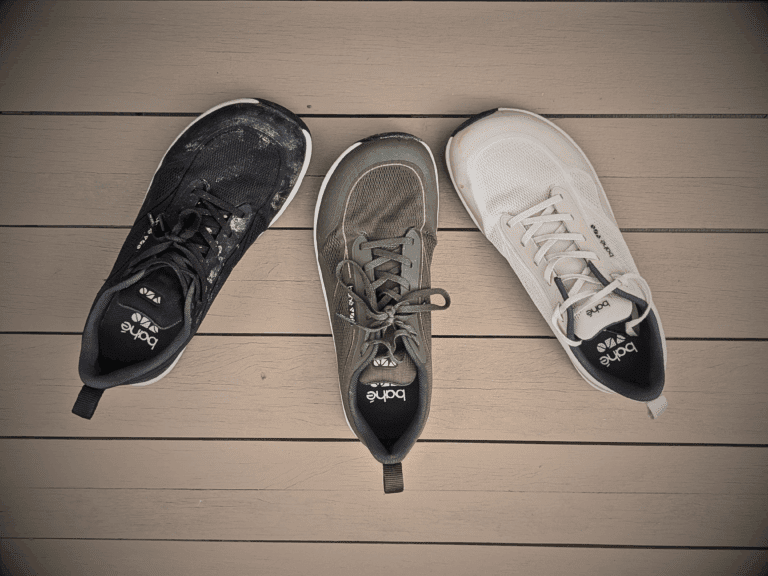Weight
9.3 oz / 264g for men’s US9
Stack height
29mm
Zero Drop
Made for
Rocky dry trails
Wet condition
Short/Longer distance races
Fit
Average volume
Narrow midfoot
Average toe box
True to size
Feel
Soft with little ground feel
Fast!
Stiffer with some pop
Pros & Cons
+ Truly a fast shoe
+ Good in many conditions
– Price
What do you want to know?
Common questions:
Let’s start this Altra Mont Blanc Carbon review by addressing the elephant in the room.
This shoe is $260.
It’s hard for 99% of trail runners to justify that price. Are we really pushing for that extra few percent reduction in our race times? Maybe you are, and I’m not the one who should judge you for that.
Ok, it’s an expensive shoe. Now that I’ve addressed the major issue, let’s look at the positive.
All the intended promises Altra made for this shoe…well, they’ve followed through! Much to our wallet’s detriment.
The Mont Blancs are fast.
I put in my fastest trail marathon time in these shoes and felt I could have pushed even more.
My legs turned over more effortlessly, and my stride lengthened on the flat.
It’s not all perfect, though. Some of the poor-fit hangovers from the original Mont Blanc are still present.
So, when it comes down to it, is it worth spending your hard-earned cash on a shoe with a subpar fit purely because of the promise of speed?
Let’s dig in to find out.
I was not gifted or loaned this shoe. I paid for them with my own money, and I will even keep it in my rotation.
I have to start with the fit. Because if the shoe doesn’t fit, there’s no point looking at it.
And the fit was an issue for me in the original Mont Blanc. They never worked, and in the end, I just got rid of them.
With the Mont Blanc Carbon –to be honest– it was touch and go for a while. They’re not perfect, but they’re runnable for me.

What size to order?
I went ½ a size larger, but I wish I had stuck with true to size. Normally, I prefer a decent amount of room at the front of my toes. With ½ a size larger, I thought I had the perfect fit, but after running about 50km, I believe I’m wrong.
This race shoe is made for going fast, and sometimes, you must sacrifice comfort. Opting for true to size would mean a tight fit all around, even in the toe box –but not too much that it would cause bruising etc. This still isn’t a conventional shoe shape like a Nike or Hoka, but at the same time, don’t expect a roomy Lone Peak, either.
Which Altra Shoe is for you?
Take a quick 4-question quiz to identify the perfect Altra running shoe for your feet! You'll get both road and trail options based on your answers!
Is the toe box actually wide?
Continuing with the “racing” fit, the toe box is more similar to the modern style of Altras, meaning it’s not quite as roomy as a Lone Peak or even a Superior. I found my little toe didn’t have full room to splay. On the other hand, the big toe area is nicely squared off, allowing the big toe to wiggle back and forth during the running gait.
Don’t expect a huge amount of toe depth in the shoe. You can wiggle your toes a little without feeling uncomfortable, and I believe there’s more depth than the Timp 5 or Superior 6, but there’s no comparison when it comes to the Lone Peak or Olympus. But again, this is a racing shoe, and it’s difficult to marry perfect fit with performance.
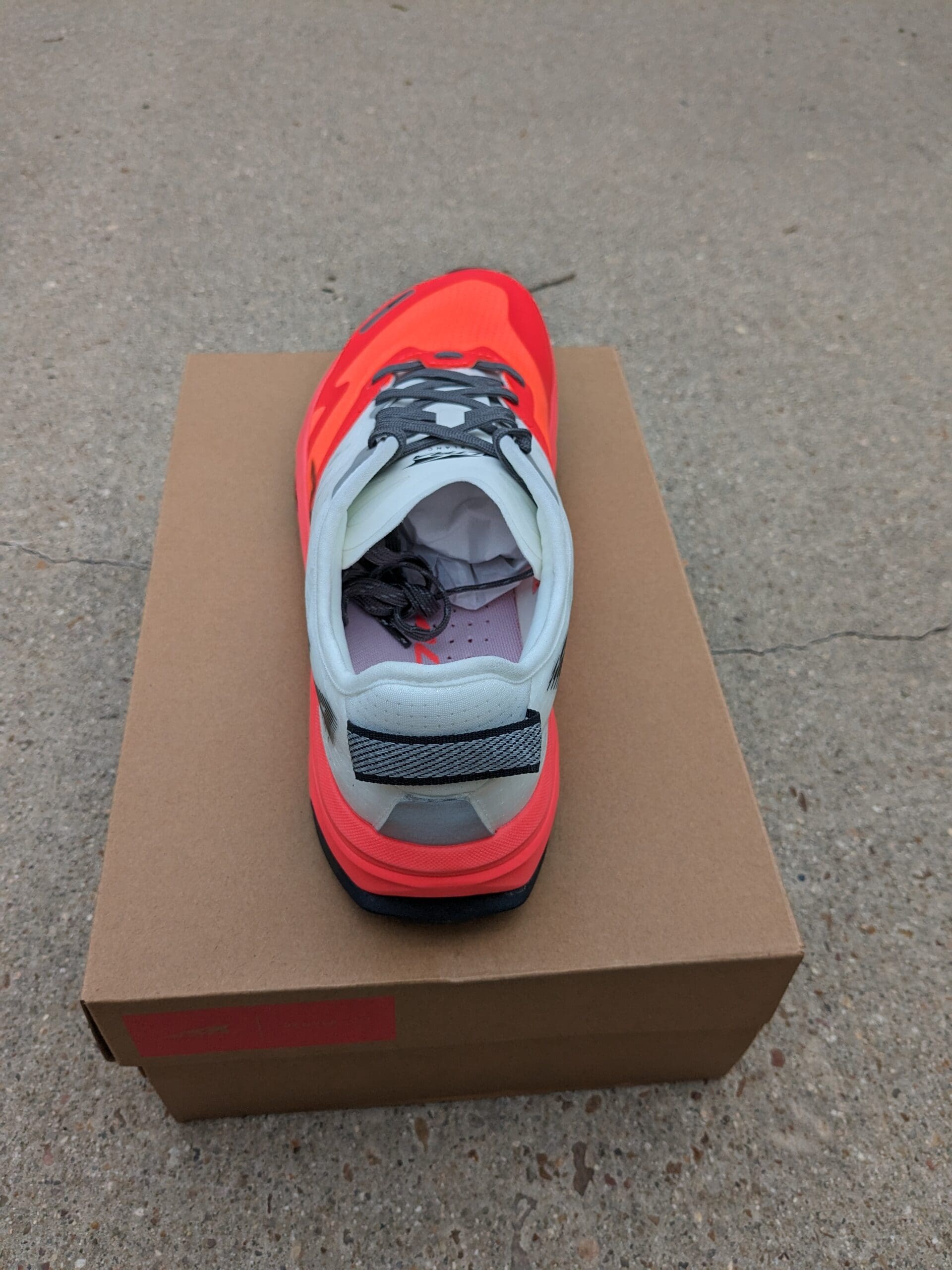
Is the upper and midfoot forgiving?
In short, the midfoot is a bit tight. If there’s something I’ve often struggled with in more recent Altras, it’s the midfoot width. The upper material is very flexible, moulding to the foot almost perfectly, but I still found my midfoot overhung the midsole slightly. The only way I could find any comfort was to loosen off the lacing, especially around the central eyelets.
Over time, the upper started to slacken, and my feet settled into the shoe. Or the shoe was moulding to my foot. 🙂 Either way, the more I ran in the shoe, the more comfortable it became.
I will admit that I was worried during the first 30 minutes of running in the shoe. The heel was sloppy, the midfoot was overtight, and I had pain in my left foot. It was not a great start. But after a lot of fiddling and re-tying, I found my comfort zone.
Does the heel lock in place?
I need to reassure you that this is not the heel disaster we saw in the original Mont Blanc. There are no blisters—yay! But it’s still not perfect. As I mentioned, the heel is a bit sloppy for my liking, and the midfoot lacing keeps the foot in place.
I ran with the insole in and without. I tried different thicknesses of insoles. All to try and get my heel to sit perfectly in the heel cup, but nothing seemed to work. In the end, I returned to the original insole and dealt with a mildly sloppy heel. Because the heel cuff cushion is so soft and the material is smooth, there is no worry of blisters; it can just be a little unnerving when cornering quickly.

Will they accommodate shallow and deep feet?
The Mont Blanc Carbon is neither shallow nor deep. It’s slap bang in the middle. Those with a shallow or average foot will find more than enough room. But if you have a deeper foot, you may want to try switching the insole for something thinner. Either way, I’m still confident you can make it work because of the flexible upper materials used.
As you can see, the fit is a real mixed bag. I don’t think it will be perfect for any foot type, but this is the trade-off we make for performance-focused shoes. We can’t have it all, can we? In the end, I just made it work, and I will continue to make it work!
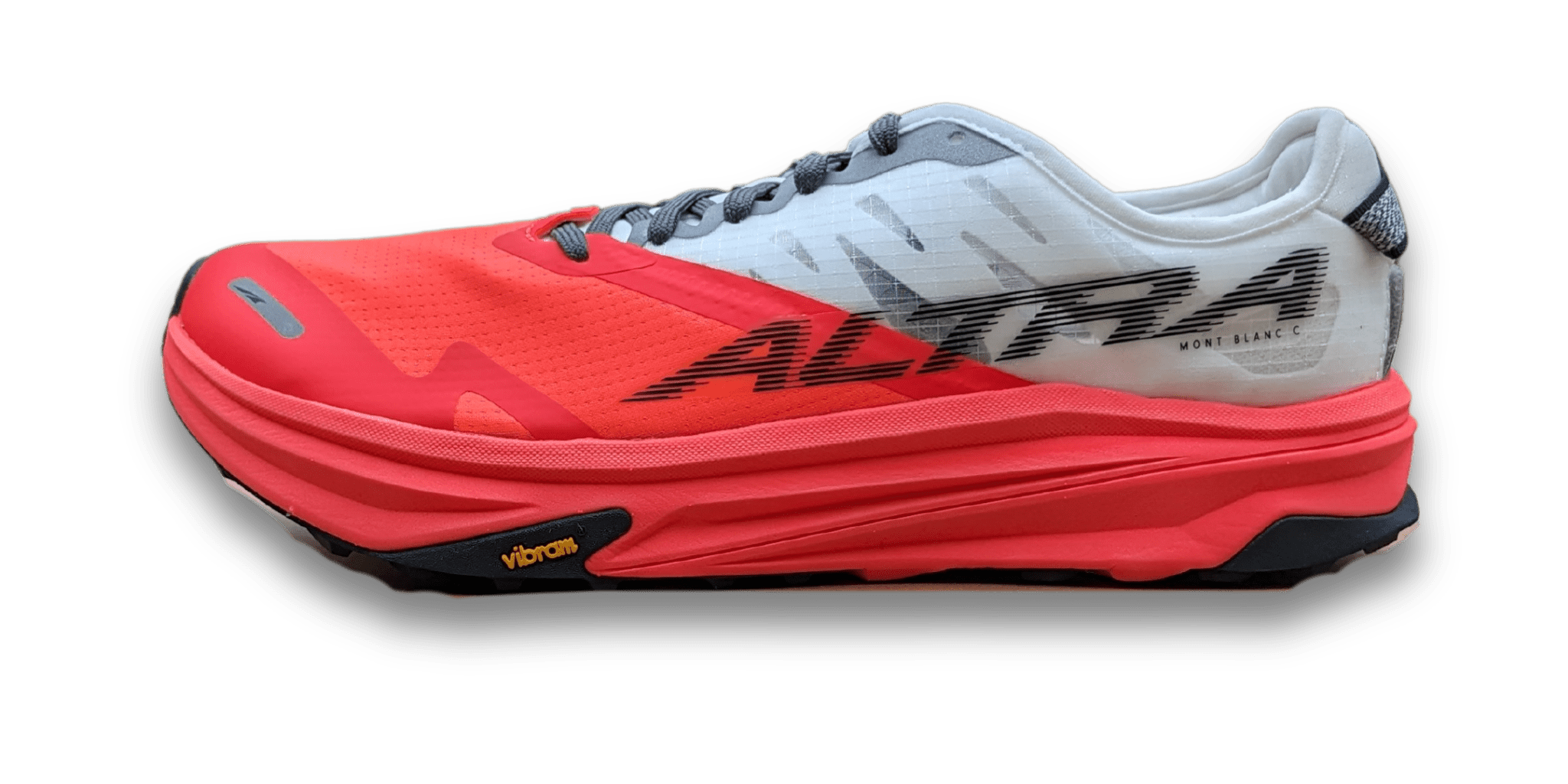
Altra Mont Blanc Carbon
This is where things get interesting!
It may seem strange that “Barefoot” Run Review is reviewing a maximal race-focused shoe like the Mont Blanc Carbon, but that’s exactly what my philosophy is about.
Using minimal/barefoot running as a tool to improve your running.
And using highly cushioned and even carbon-plated shoes as a tool if they serve you and your running goals! In this case, the tool improves my speed by a huge amount.
What I mean is the Mont Blanc Carbon is fast and not just in a straight line.
Does the Mont Blanc Carbon still flex?
For a carbon-plated shoe, it’s flexible, but it’s still relatively stiff. You may be able to bend the shoe with your big, strong arm muscles, but that’s not exactly what I call a flexible shoe. Really, that’s the point, though. You’re supposed to get a pop from the shoe upon take-off. While I’m not 100% convinced that carbon-plated technology makes us faster, it may create stability in the shoe that’ll allow for a softer, more springy foam.
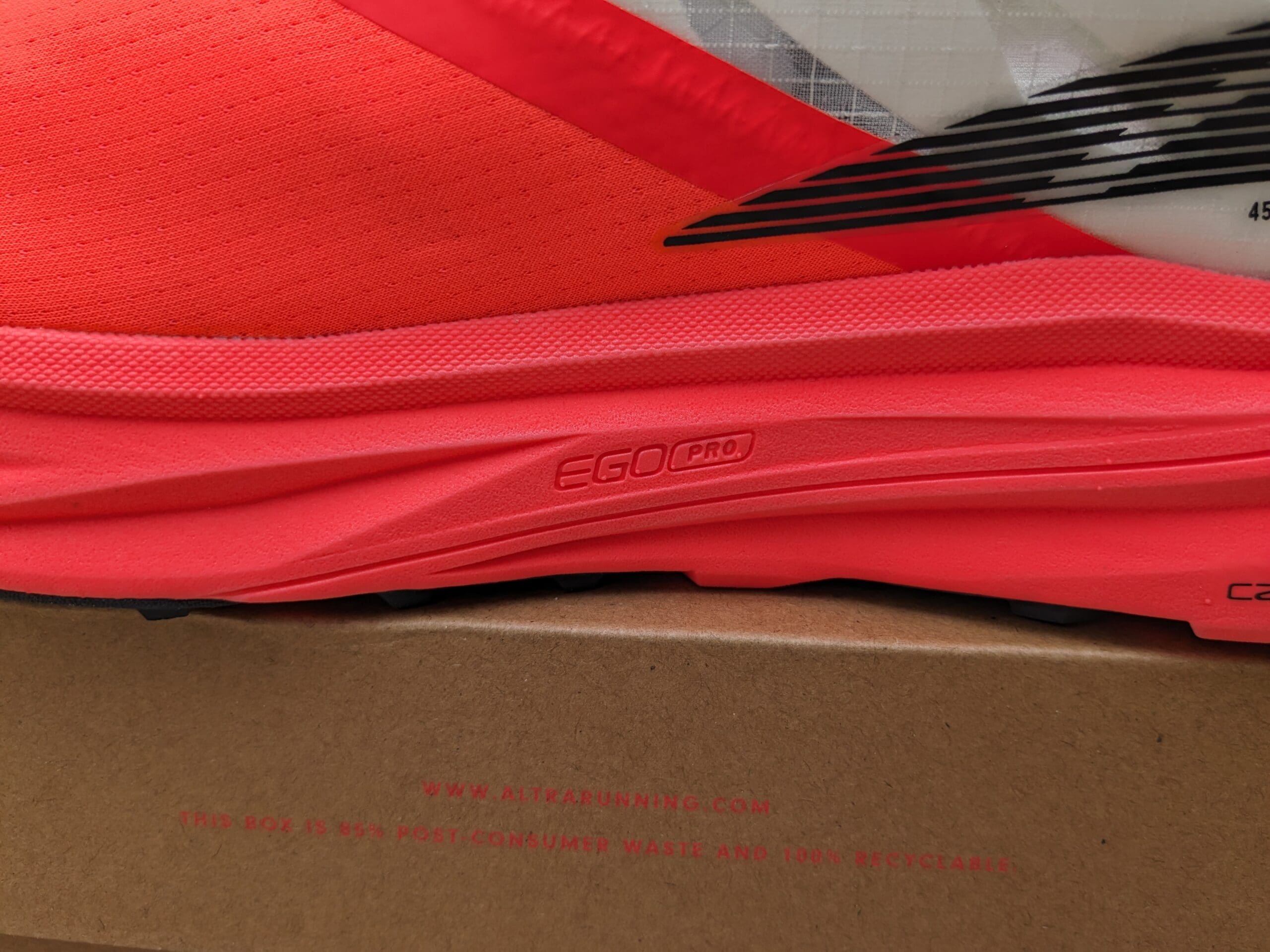
What is the ground feel like?
Super shoes are supposed to be springy, and for an Altra shoe, the Mont Blanc Carbon is. At the same time, we’re not looking at a midsole compound like Nike or Addidas. It’s still slightly firmer, which I think is good, especially for the trail. You don’t want to rock and roll on off-cambered rocks. You want to be confident in your foot placement.
With 36mm, you’re never going to get much ground feel. But this could be the whole reason why the shoe is fast. With that much foam underfoot, you can lengthen your stride without worrying about jabbing your foot on a rock. I’m not saying that this is a good solution long term. A longer stride means higher impact forces, which must go somewhere –most notably to your knees, hips, and back. But for race day, that’s something to overlook for a fun time on the trail.
Are the shoes zero drop?
The Mont Blanc Carbons are listed as zero drop and feel close to me. Although the stiffer rockered motion doesn’t feel like a Lone Peak or Superior, I still feel at home on the platform. The same cannot be said for the more recent 4mm drop Experience line from Altra.
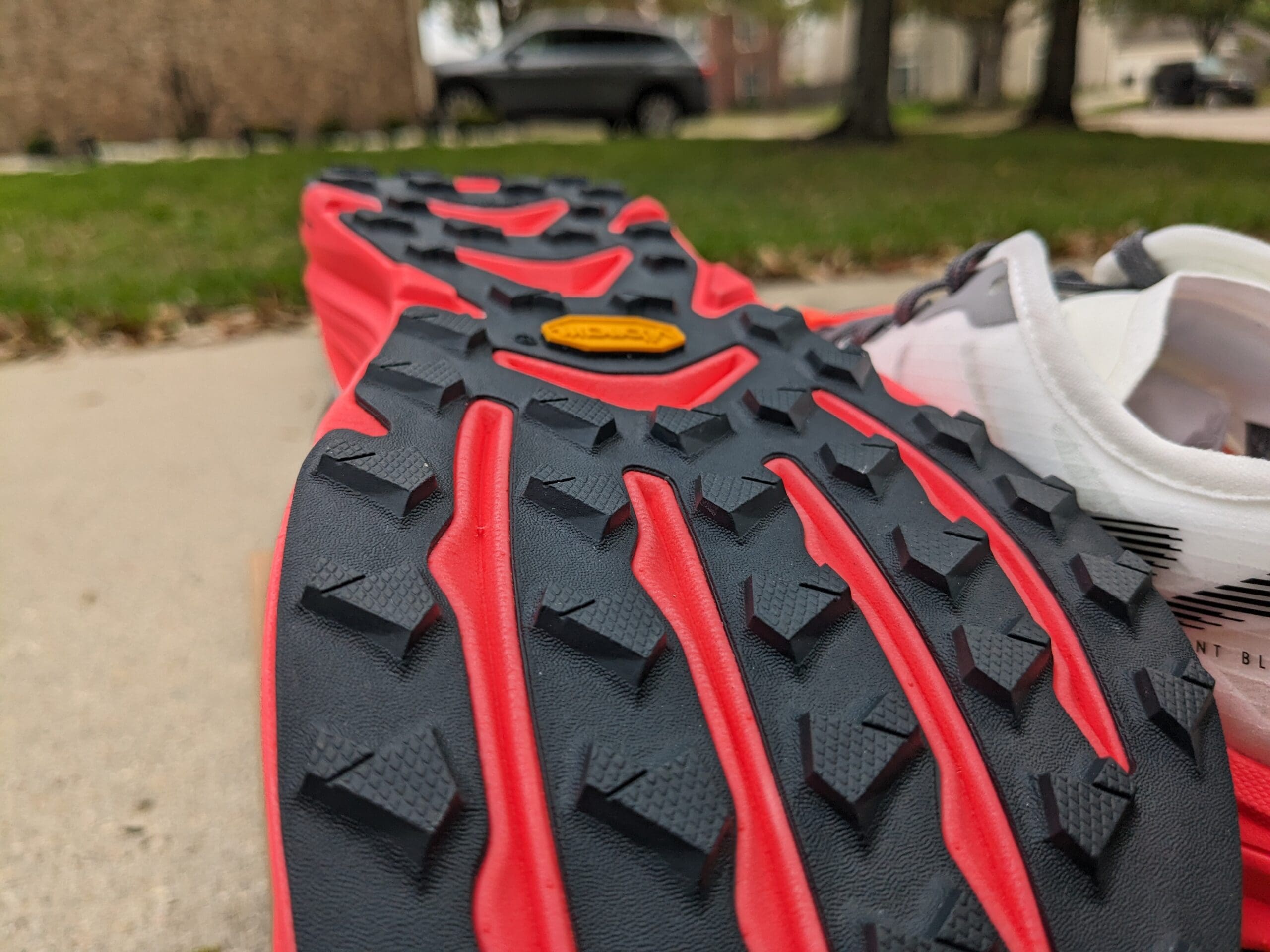
What’s the grip like?
I’m impressed with the outsole after running these shoes in dry, sloppy mud and gravel. It saved me in a very muddy trail marathon. It wouldn’t be my first choice if I were hitting the English fells, but it’s better than the grip on most Altras!
The rubber compound is Vibrams Megagrip Litebase. We can assume this will not be as durable as the standard megagrip, but it’s indeed lighter. And from my experience, it performs just as well.
With all that grip underfoot, the sloppy area of the shoe becomes the fit. That’s right! It’s not the shoe slipping on the mud; it’s your foot slipping in the shoe. I felt this same uneasiness in the Lone Peak, where my heel rolled around in the inner while the shoe’s base was planted. Part of this is down to the fit, but the silky material we often see in Altra inners now is a contributing factor. In the end, this is a feeling I had to get used to, but it’s less than perfect.
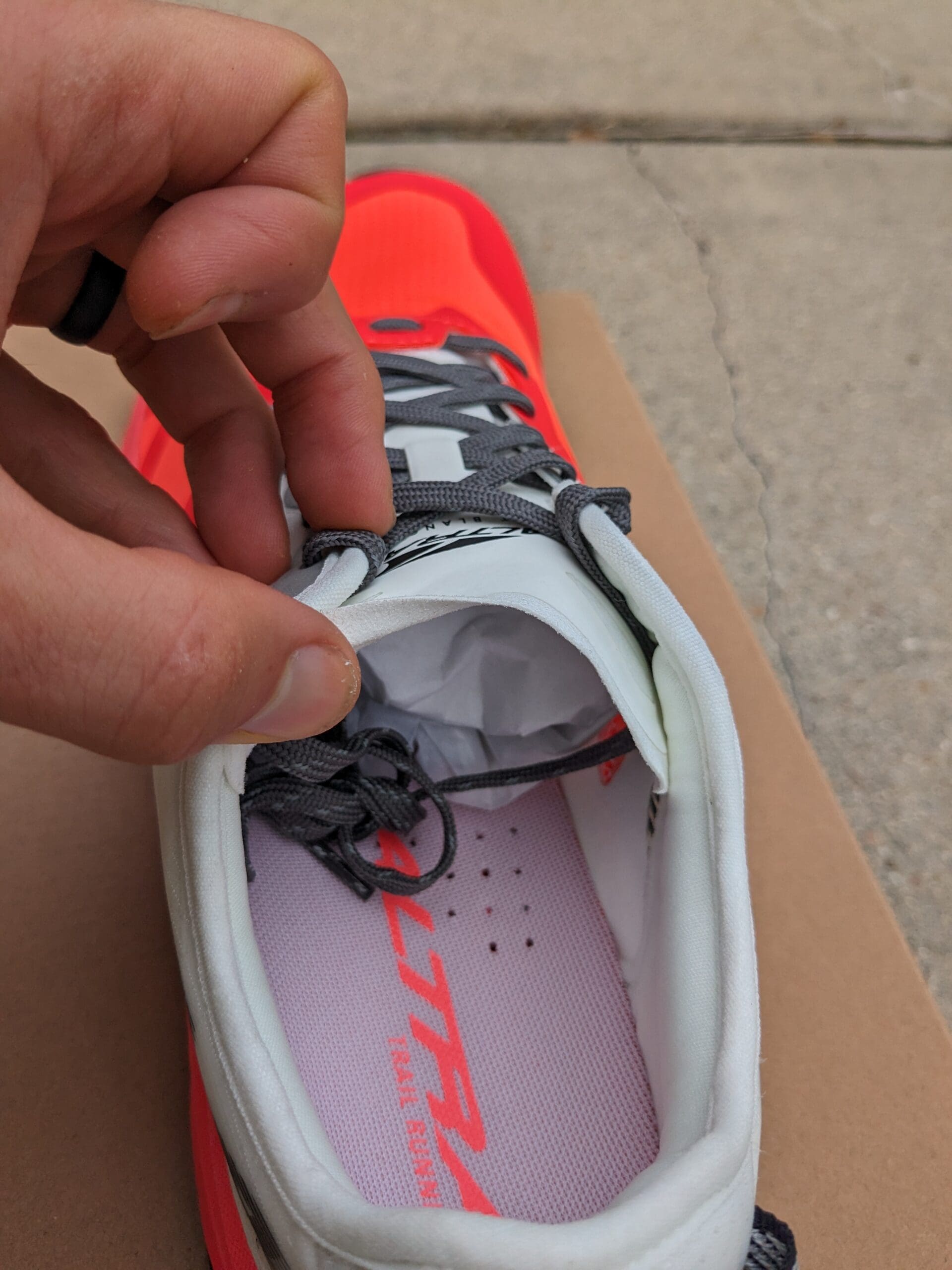
What type of runs are they suited to?
To my surprise, the Mont Blanc Carbon performs well in many conditions. If you’re looking to race and get a fast time, you should seriously consider this model…if you’re willing to spend the money.
If the trails are super technical or unbelievably muddy, I’d suggest looking for an alternative. In all honesty, there are very few options that’d work here, which is a testament to the flexibility of the Mont Blanc Carbons.

Altra Mont Blanc Carbon
The Altra Mont Blanc Carbon is clearly a trail shoe. But that doesn’t mean it’s full of protective features like other trail shoes.
Apart from some superficial overlays and the toe bumper, the protective aspect finishes at the large stack height. So, I wouldn’t take them into the high alpine and expect them to last a lifetime.
Can the upper withstand scuffs and scrapes?
The upper has some strategically placed overlays to avoid damage from scuffs and scrapes. While they’re fairly lightweight and will do the trick in most conditions, beware –the material over the toes is thin! And even though it’s unlikely you’ll scrape any rocks in that area, it could easily cause a rip if you do.
The midsole is also soft and exposed. Looking at the shoe’s underside and edges of the exposed midsole, we see a lot of exposed foam. While not usually an issue, this foam is relatively soft, so any sharp rocks you may step on or scrape against can easily slice the foam. Over time, that could become more and more of an issue. But again, this is a race shoe. We’re not looking at this as a day-to-day workhorse. So, depending on how often you race and the distance you run, this shoe could last you years.
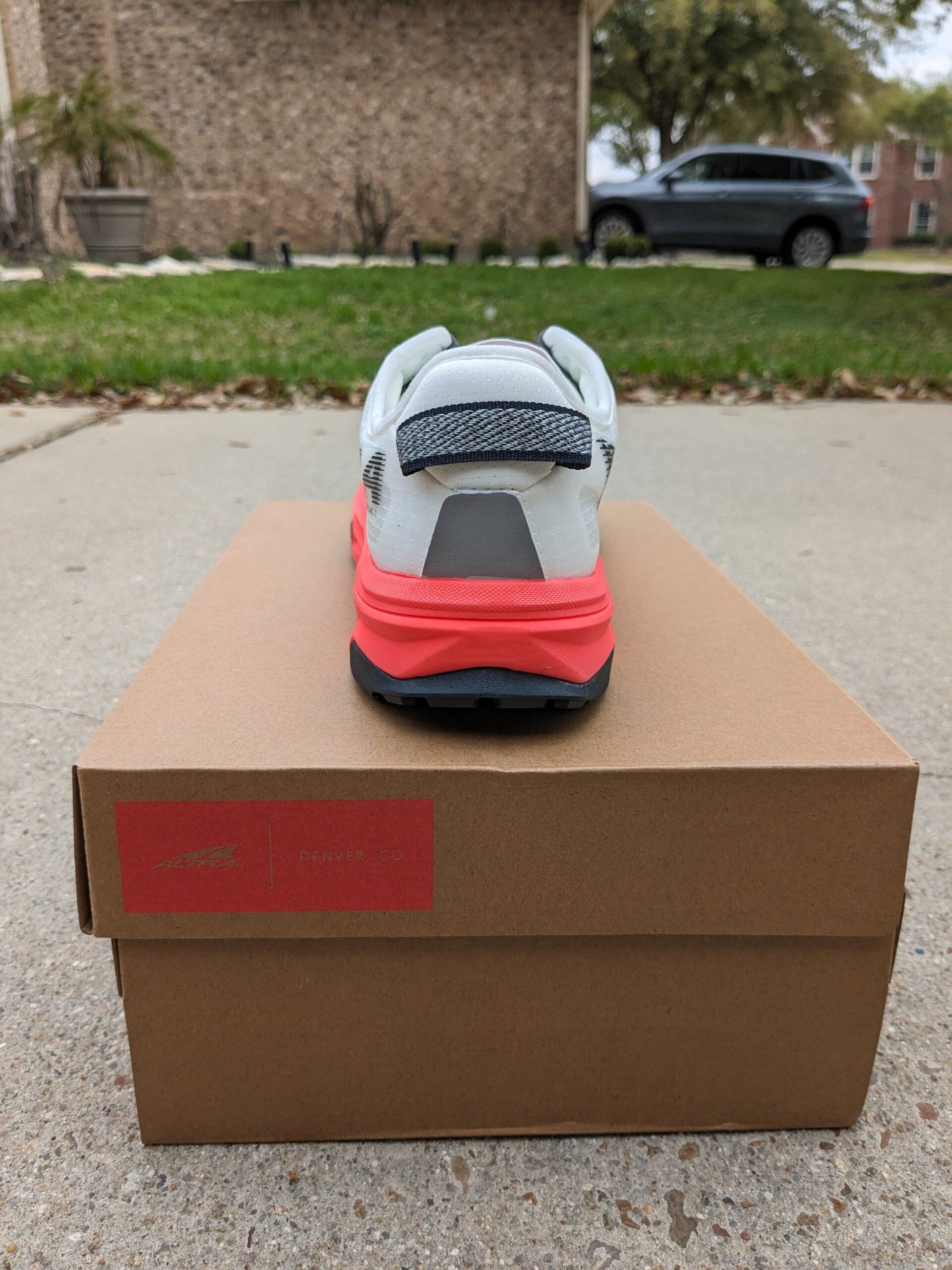
How long will the outsole last?
Being Vibram Megagrip, we expect the outsole to last fairly well. But this Megagrip is the Litebase version, meaning it’s lighter but less durable. This will wear at a decent rate, but I don’t think it’s the weakest part of the shoe, so it’s not a concern for me.
We’ve seen the outsole peel away from the midsole; could this be true here? I don’t think so. Most of the rubber is one piece, so there are few edges to catch and peel across the underside. This isn’t a design like the Olympus 5.
Is the build high quality?
For a shoe of this price, we expect a decent build. And we get it. On my pair, I found no blobs of glue hanging around or any stitching going awry. Besides the reds looking a little pinky, the build quality is decent.
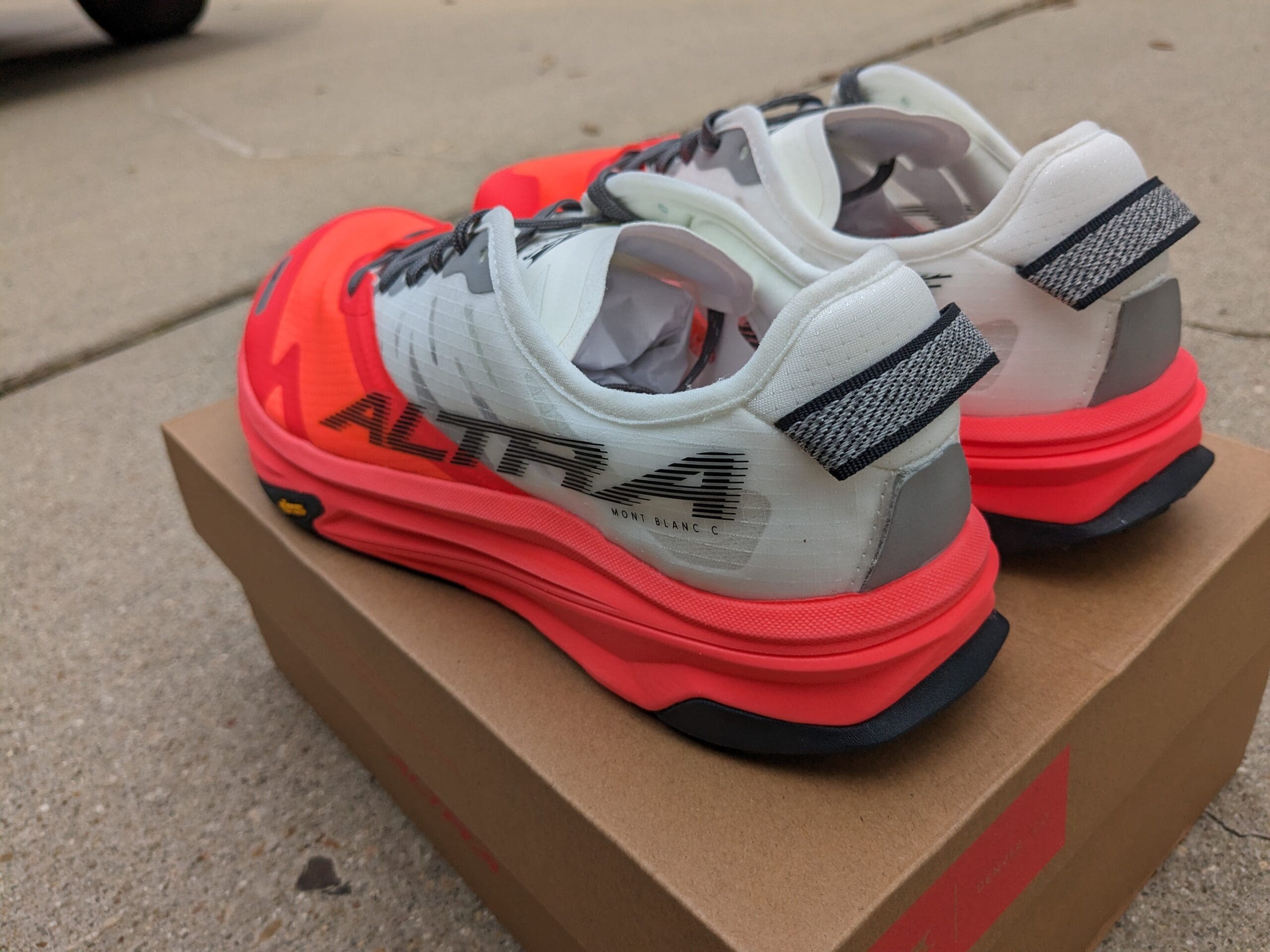
Are there any weak points of the shoe?
As mentioned before, the weak point will be the exposed midsole. It’s not durable foam, and with it being exposed to the harsh aspects of a trail, I think it’ll get sliced up pretty quickly. Because of that, I think your pair will start to look a bit sorry for itself at as little as 300km. Does that mean you can’t run in it? No, but do you have full confidence in them on the start line? I’m not so sure.

Altra Mont Blanc Carbon
Buying this shoe isn’t for the faint-hearted.
It’s a decent shoe with a lot of race potential, but with its unoptimized fit and high price tag, I can see many people skipping the Mont Blanc Carbon—and for good reason.
But if you’re looking for that last couple of percent on your trail PR. I’m confident the Mont Blanc Carbon will help you there.
It for sure helped me.
Even if it was a placebo, man, it made my legs feel fast!
But if you’re unwilling to shell out all that money, I think the Timp 5 could give you some of the gains for a much lower price tag. Yes, it’s not quite as soft and flowy, but it has a similar stack height and ground feel, and I guess it will last longer.
Remember, the best way to get a fast time is to train better! Sometimes, that means more minimal and flexible shoes. So remember to keep some flexible minimal options in rotation, whether that’s barefoot style options like the Xero Shoes Mesa Trail II or slightly cushioned versions like the Altra Superior 6.

Altra Mont Blanc Carbon
